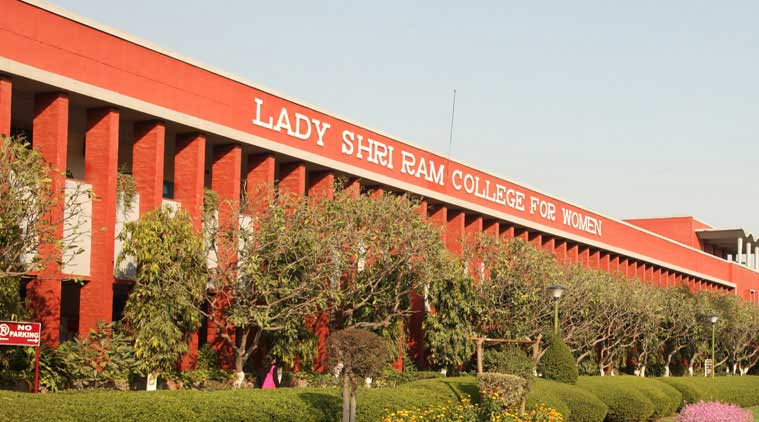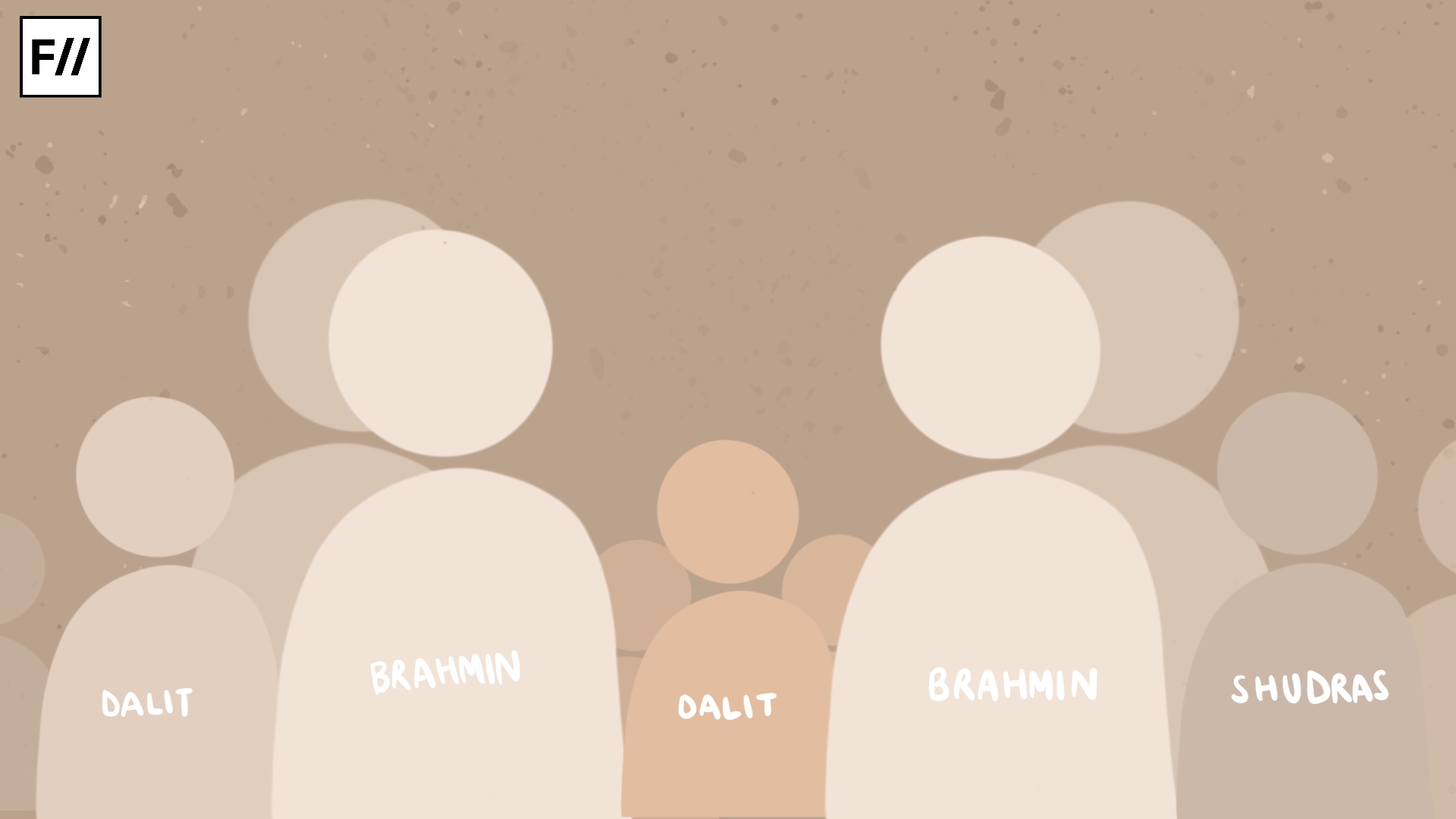“You will become like one of those rebel girls who fight against everything”, “You will become the feminist kind”, “You will chop your hair and start wearing short clothes”, “You will become more sexual”, these were some of the many responses that I received when I told people that I had joined a women’s college in Delhi University. These people included my family, friends, neighbours, parents’ friends, random uncles, and basically almost everyone around me.
I did my under graduation in English from LSR. During these years, I realised that a women’s college is way more complex than these blatant generalisations portray it to be; it has its own shades of white and black. Within it resides multiple identities that make it a place full of different narrations. And different bodies inhabit and experience this space in different ways, depending upon, amongst other things, their gender, caste, class, religion, age, sexuality and physical ability. Being one entity among many, I also experienced this women’s space in a particular way. And this experience has been multilayered.
Today, India has a large number of women’s colleges. In 1987, there were 781 women’s colleges, 1195 in 1997 and the number rose to 1902 in 2006. For years there have been debates about the importance of women’s colleges through questions like “Are Women Only Colleges Relevant Today?” and
Are Women’s Colleges Outdated?“. Today, however, the debate has become even more complex. While a big group of women paint a positive picture of their experience in these spaces, there are also voices, usually from the marginalised, that raise points of dissent.
“Empowering” And “Liberating”
Historically, it is believed that women’s colleges granted women the opportunities that were earlier reserved for men. They made available for women courses that were of their interest and helped in countering the lack of women representation in male-dominated fields of study. In India, where female literacy is still alarmingly low, these colleges allowed women to gain an education because of a sense of safety and purpose that they had to offer.
Also read: 5 Myths About All-Girls Schools We Have To Debunk
I constantly have conversations with my friends who are or have been students of women’s colleges about their experiences. A lot of them tell me that they feel that a women’s only space brings them in contact with other women and this gives them the ability to recognise themselves as a group. It gives them “a sense of sisterhood” and “solidarity”. These conversations make women realise the meaning and importance of their personal experiences.
Many of my friends tell me that there is a sense of freedom that they enjoy in this space. And this freedom then seeps into other parts of their lives as well. They feel that being in a women’s space opens and frees their way of talking, sitting, walking, laughing. They claim to enjoy a greater sense of agency in dressing. There is an opening up and an exploration of their body politics. Being in an all women’s space, away from the male gaze, makes them feel safe enough to express themselves through their body and clothing. Along with this sense of authority, comes the willingness and freedom to protest. Many women have shared with me the fact that their first protest experience happened during their college years.
However, having said all of this I would also say that this rosy picture of LSR and other “woke” women institutions mostly comes out of the experiences of women who are upper caste, upper class, able, heterosexual and privileged in general.
Not All Experiences Are The Same
A lot of women who come to LSR are toppers of their school/state/board. LSR expects a woman to be academically well versed, fluent English speaker, knower of all dead-white-male writers. And if one isn’t then survival becomes just as tough.

This t-shirt was put up for voting for the official college merchandise by the LSR Students’ Union Facebook Page in 2005. It recently received criticism and opened debates about the aura of pride and arrogance prevalent in the institute.
Image Source: DU Beat
It begins in the classroom where English is the predominant source of instruction. And not the Indian English, the one with fancy long words. During my 3 years, I had around 18 papers and none of them addressed caste or sexuality in the Indian context. These subjects were always relegated into the electives sections or were offered only as optional papers.
Getting into a society and then surviving through it becomes another excruciating task. Having been a member of one, I know that the process of selection works on the principals of “merit” without taking into account the privileges or the lack of it of those auditioning. And even if one makes it into a society, the teachers and the administration, with its compulsory 66% attendance, constantly make your life difficult. Getting the admit card, which is compulsory to take exams, is given only when the attendance criteria are met. Many times, my friends and I have had to miss class tests because of the various performances that we gave and for the same no respite was offered by the teachers or the administration.
Awards are given for the students who have been the best in different fields. Who decides this? What are the criteria? There are no answers.
Throughout the three years, the college refused to give us a space to practice. They even began throwing us out of the college premise after 7 pm with the reason that “we do not want to take any responsibility for what happens to you girls at such late hours.” While the college boasts of its extracurricular performance in national reports like that made by the NAAC committee, it rarely does anything to promote the culture of dissent.
Surviving through the official college fest, Tarang, becomes a whole level of tough task altogether. While the society members and unions try to organise funds for their events, the college administration tries its level best to make this as difficult as possible. Each small procedure requires the signature of many authorities catching hold of whom is always a challenge. And on rare days when our staff advisor does get ready to meet us, her first words were always ones of discouragement and expressed her disappointment in us. While she never came for any of our performance, she did expect us to make “cards and small gifts” for the authorities as a token of appreciation. And when such demands were refused, she threatened to withhold our certificates.
At the end of the three years, the college “rewards” the “best” students for their “meritoriousness”. Awards are given for the students who have been the best in different fields. Who decides this? What are the criteria? There are no answers. These awards are again mostly given to the privileged section of the lot. And they promote the competitiveness that runs around the college under the garb of “sisterhood” and “solidarity”.
While “empowering” “liberating” are words that are thrown around very commonly around LSR, in a lot of cases, the faculty, students, and administration, instead of sensibly dealing with instances of mental illness, end up promoting and causing it to a great extent. Many drop out of the college within the first semester itself and many of those who survive the three years are filled with doubt by the end.

The LSR gardens, which are supposed to be leisure spaces for many women and where women are seen lying around, sitting or working, in groups and alone, are covered with barbed wires for 6 months every year. For what? The Green Cup. An award granted to the most well-maintained lawn in all colleges of Delhi University. This act shows that the ideas of freedom, justice, equality that are preached in the classrooms are just as made up as these lawns.
Even today, despite being women’s spaces, these institutions still continue to be defined by ideals of patriarchy.
Another such restricting space is the hostel. Like, many women hostels, the hostel of Lady Shri Ram College follows a curfew as well. The women are expected to be in the hostel premise by 7:30 pm. And this can be extended till 10:30 pm with a signature from the hostel warden. Inability to withhold these rules leads to punishment of various sorts- notices, gate outs, suspensions, and rustications. Protection and benefits of university life remain dependent on compliance and subjection to these norms. These curfew timings aim to create docile female bodies that stay within private boundaries during the night, bodies which do not dare to reclaim the public nightlife. These timings harp upon the notions of modesty that patriarchy has always expected out of women. They imprison women into the modern lakhman rekhas.
It is important to note that the origination of segregation of men and women into differential educational spaces has patriarchal reasonings attached to it. Women colleges in the US began with the underlying idea that having separated spaces for women’s education would keep the boys away from “disturbance”. Women’s education was accepted so long as women were not threatening the established routine of men. Even today, most women colleges of Delhi University are located away from the North Campus. This spatial segregation reduces women’s visibility in and access to the main campus.
The access of women from women’s colleges to University Library, especially during night hours, becomes a problem. Their participation in protests, college events, and discussions is also hampered. Because of the placement of women’s colleges in different corners of the city, women of these colleges become a minority, a non-united entity. And the main hub continues to be masculinised, dehumanised, and out of bounds for women. In Delhi University, for example, many women colleges, including LSR, do not participate in University Elections and are not a part of the Delhi University Students’ Union, with the reason of being “apolitical” spaces. This becomes paradoxical for a college that preaches feminism which highlights the political nature of everything personal.
Also read: Pinjra Tod: Stop Caging Women Behind College Hostel Bars
Since the beginning, women’s colleges have been seen as a project of nationalism. They were built in order to give a particular Victorian-Brahmanical image of women of one’s country. Even today, despite being women’s spaces, they still continue to be defined by ideals of patriarchy. Do the women in these colleges actually have a say? Who are the ones who are being given a voice? These are some of the questions that need to be asked today.
References
1. Private Space in Public Transport
2. Perceptions of Women’s Colleges in Male-Dominated Society
3. Segregation and The Women’s College
Featured Image Source: DU Beat
About the author(s)
Kavya is currently pursuing her MA in Media and Cultural Studies from TISS, Mumbai.







A very well written article. Each and every word is true for I.P. College for Women too. To add to it: the faculty looks down upon anyone remotely participating in student politics. These people are called to staff rooms and shamed, or counselled to leave politics. Being a college that does not participate in DU’s Student Union election, the idea that politics is “dirty” is reiterated in class rooms, staff rooms and informal circles. Which very much derives from the purity-impurity binary of classism and casteism. Politics is dirty because it is practised by ‘dirty’ people? Because it is needed by a certain people, who you look down upon because they come from ‘dirtier’ backgrounds than you? Because you aren’t in positions to be dependent on politics, to fight for yourself, so the marginalized that does, is an inferior person for you?